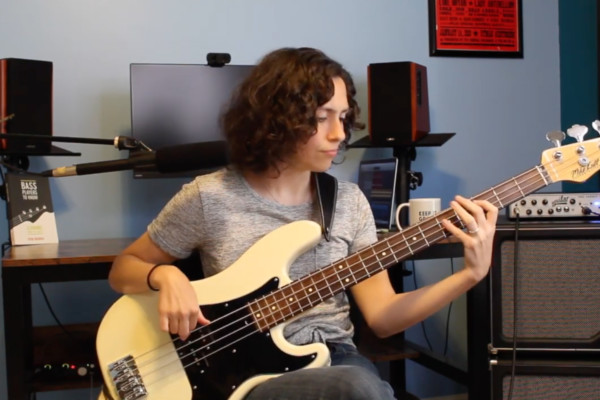Bass Lesson Archives
Learn The Bass Line To “Come As You Are” by Nirvana
In this new “Keep It Groovy” bass lesson, Ryan Madora digs into one of Nirvana’s biggest hits, “Come As You Are.” Learn some of the theory behind Krist Novoselic’s bass line, which is perfect for working on your pick technique.
Essential Tips for Playing Bass With A Pick
Ryan Madora’s newest “Keep It Groovy” bass lesson is all about getting acquainted with a pick. Let’s dig into the mechanics of it and establish some exercises for our pick-playing journey.
Learn How To Really Play The Bass Line To “Come Together” by The Beatles
In this “Keep It Groovy” bass lesson, Ryan Madora walks us through perfecting the bass line to “Come Together” by The Beatles. To do so, we need to understand the theory behind the line and how to play with note duration and articulation.
Keep It Groovy: Learn The Bass Line To The Beatles’ “Eight Days A Week”
Today, Ryan Madora keeps it groovy by learning triads, following a chord progression, and applying a walking bass line by taking a page from Paul McCartney’s book and “Eight Days A Week.”
Keep It Groovy: Learn To Play The Bass Line To “Ball Of Confusion” By The Temptations
If there’s one thing we know about Motown, it’s that the grooves are deep and bass legends like James Jamerson and Bob Babbitt have given us some incredible lines to learn from. Ryan Madora runs through “Ball Of Confusion” by The Temptations in this new “Keep It Groovy” bass lesson.
Bass & Creativity: Melodic Development
Olivier Babaz is back with another “Bass & Creativity” lesson, and this time, he’s sharing a boot camp on melodic development with three concepts. Utilizing these tools, you’ll be able to come up with tons of ideas to explore.
The Brown’stone: Fonk! And the Power of “a”
This week in The Brown’stone on No Treble, Rich Brown is talking about FONK! That’s right, people. This lesson is an exercise in groovin’ and adding some ‘stank’ to your funk game.
Keep It Groovy: How To Play The Bass Line To “Cissy Strut”
Ryan Madora’s newest “Keep It Groovy” bass lesson is here, and she’s featuring one of the all-time grooviest of bass lines: “Cissy Strut” by The Meters and George Porter, Jr.
Keep It Groovy: How To Play The Bass Line To “Ain’t Too Proud To Beg”
Ryan Madora has a new bass lesson series on No Treble. “Keep It Groovy” kicks off with a lesson on how to play James Jamerson’s bass line on The Temptations “Ain’t Too Proud to Beg”.
The Brown’stone: Pentatonic Scale Patterns That Will Open Up Your Fretboard
Rich Brown’s students call this bass lesson a game-changer. This week in The Brown’stone on No Treble, Rich takes a look at some Pentatonic sequential patterns that not only sound great but will also open up your fretboard in a colossal way.
The Brown’stone: The 2-5-1 Chord Progression Using Triads & Inversions
This week in The Brown’stone on No Treble, Rich Brown wants to take another look at triads and inversions. In this lesson, he shows how you can use these three notes to play the II-V-I chord progression in a variety of different ways.
Bass & Creativity: Building a Story
The best way to engage listeners is to craft a story with your music. In this “Bass & Creativity” lesson, Olivier Babaz takes a look at ideas and methods to build a story through your improvised solos and compositions.











